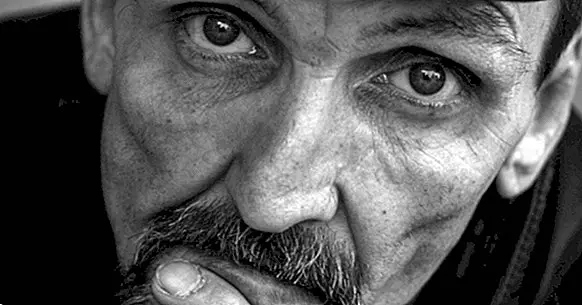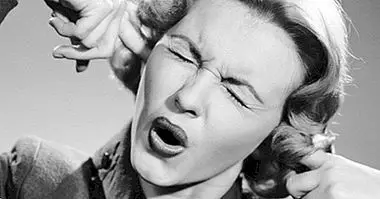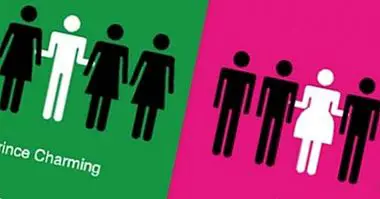The stigmatization of people with psychiatric diagnoses
Stigmatization is a process by which a person becomes entitled to a set of characteristics that are considered socially undesirable. That's why a process connected with discrimination and social exclusion .
Unfortunately, stigmatization is also a highly frequent process in clinical settings where mental health professionals carry out their work (and not only in mental health). This has had very negative consequences for both people with diagnosis and their families, so it is currently a relevant issue and much discussed in different areas.
In this article we explain what is stigmatization, why does it occur, what consequences has it had and through which proposals mitigation has been tried in different contexts.
- Related article: "No, mental disorders are not adjectives"
Psychosocial stigmatization: from stigma to discrimination
The use of the word "stigmatization" makes it possible for us to return to the concept of "stigma" and use it as a metaphor in social studies. Stigma in this context refers to a trait or condition that is attributed to a group of people and that causes attitudes or negative responses towards them to be established.
The application of the term "stigma" in sociology It was popularized by Erving Goffman in the 60's, who would define it as a "profoundly discrediting attribute" that is related to a negative stereotype about physical traits, behaviors, ethnic origin or individual conditions understood in terms of danger (eg diseases) , migration, diseases, crime).
Thus, stigmatization is the process through which a group acquires a differential feature or a "mark" of identification, which is valued by other groups as the outstanding feature, which has as a consequence different forms of discrimination towards that group "marked "
The reason why stigmatization causes discrimination is because it is a process in which our attitudes are put into play, understood as a phenomenon of cognitive, affective and behavioral components ; despite being different from each other, they are strongly connected.
It is these attitudes that help us classify or categorize what surrounds us in terms of "good" or "bad", "undesirable" or "desirable", "adequate" or "inadequate", which often also translates into "Normal-abnormal", "healthy-sick", etc.
These categories, being loaded with affective and behavioral components, allow us to establish parameters in interpersonal relationships . For example, that we avoid approaching what we have categorized as "undesirable", etc.
- Maybe you're interested: "In defense of people with dementia: fight stigmas and prejudices"
Who does it usually affect?
Stigmatization is not a phenomenon that only affects people diagnosed with mental disorder. It can affect a large number of people and for different reasons . Generally, "vulnerable" groups or groups are used to refer to people who are systematically exposed to being stigmatized and to live discrimination.
The "systematically" is important because far from being vulnerable per se, these are people who are constantly being vulnerable as a result of an organization and certain social structures. People who are constantly exposed to situations of exclusion, and who paradoxically have less possibilities of being protected.
In this sense, discrimination is not only an individual phenomenon (which determines how we relate to a specific person), but structural, which it is also found in policies, in manuals, in how public spaces are made up , in the other spheres of social life.
Thus, for example, there may be stigma, negative attitudes towards racialized people, towards people with disabilities, towards people in a situation of poverty, towards people who are not heterosexual, towards people with different medical diagnoses, to mention just a few.
- Related article: "Stereotypes, prejudice and discrimination: why should we avoid prejudging?"
Danger as a stigma in "mental disorders"
The social imaginary of dangerousness in relation to "madness" has evolved significantly over time. This evolution has been reinforced in large part by the care structures that still exist in many places.
For example, asylum institutions on the outskirts of cities, which confirm the myth of dangerousness in the social imaginary; as well as with coercive practices without informed consent, or with forced consent.
Danger and violence have become stigmas because they make that we recognize them as the outstanding features of the person who has the diagnosis , with which, the logical consequence is the automatic and generalized exclusion, that is to say, it occurs even if the person has not committed violent acts.
Fear and exclusion: some consequences of this social phenomenon
If the danger is what we evoke more quickly when we think of "disorders" or "mental illnesses", then the closest logical reaction is to establish distance, because with the danger our alarms are activated and with this our fears.
They are activated sometimes so automatically and involuntarily that it does not matter if they are justified fears or not (many times the people who most "fear" feel, are those who have never lived with someone who has a psychiatric diagnosis). The logical consequence of all this, is that people with the diagnosis are exposed to live rejection and exclusion constantly .
And unfortunately, mental health professionals are often not exempt from the above. In fact, in an attempt to understand this phenomenon and counteract it, in the last decades there has been a great amount of scientific studies that analyze the stigmas of health professionals towards the users of services, and how this hinders attention and creates more problems than solutions.
Another consequence of the stigmatization related to psychiatric diagnoses is that, to be understood as something negative, dangerous and synonymous with chronic disease source of constant discomfort , people who may need the attention of a mental health service are limited or stopped when seeking that care.
That is to say, stigmatization provokes a fear and a rejection not only towards the people who have the diagnosis, but towards going to the mental health services, with which, the discomforts intensify, the suffering is not accompanied, the behaviors are they become more problematic, etc.
Alternatives and resistances
Fortunately, given the unpleasant scenario described above, the specific case of people who have a diagnosis of mental disorder has been proposed as an issue that deserves special attention since the people with diagnosis and their families have spoken out against stigma and discrimination.
The latter has been recently supported by many mental health professionals, as well as by many public policies and international organizations. In fact, on October 10 of each year has been established by the UN as the International Mental Health Day .
Also, in different dates and places around the world, people with diagnosis have claimed recognition of the diversity of bodies and experiences, as well as the need to continue fighting against stigma in mental health and seek above all respect for rights .
Bibliographic references:
- López, M., Laviana, M., Fernández, L. et al. (2008). The fight against stigma and discrimination in mental health. A complex strategy based on the available information. Journal of the Spanish Association of Neuropsychiatry, 28 (101): 43-83
- Muñoz, A., and Uriarte, J. (2006). Stigma and mental illness. North Mental Health, (26): 49-59.



















